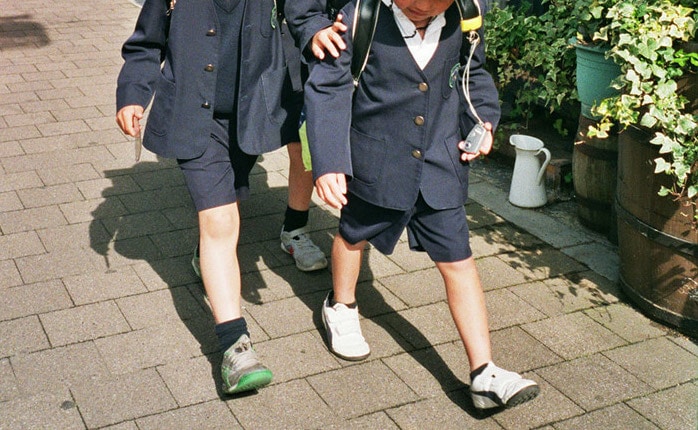Nike is launching a kids sneaker subscription
It’s almost the end of the summer, and for most parents, it means back-to-school shopping for their kids. Just in time, Nike announced that it’s launching a kids sneaker subscription called the Nike Adventure Club, aka “a parent’s best friend” as it is described on the brand’s website. Nike’s first footwear subscription service will let kids select Nike and Converse shoes as their feet constantly grow. Although it is presenting this concept as a favour to busy parents, it’s clear that the company merely discovered another great way of making big money in a less than ethical way.
The club’s pricing begins at $20 per month, so that kids can get new shoes every 90 days. For $30 per month, kids get six pairs per year, and for $50 per month, kids will get new shoes every month. For children, even six pairs of shoes a year seems excessive. According to the American Orthopaedic Foot & Ankle Society (yes, that is a thing), children over the age of three usually only grow one-half a foot size every 4 to 6 months. This means that, technically, older kids need two pairs a year. Of course, parents should be allowed to buy their kids new shoes from time to time, but is it really necessary to get them involved in our consumerist society from the age of two?

With the emergence of social media, especially Instagram, our posing skills evolved, and our wardrobes filled up some more. Why? Because we all feel like we need to have a strong ‘insta game’ and show everyone online that we have a great fashion sense. Not only did we see the rise of fashion influencers, but we also witnessed the rise of fashion kid influencers. Don’t get me wrong, I would be a hypocrite if I didn’t admit that I sometimes scroll through 8-year-old Coco’s Instagram page, because she does have great style. But let’s just stop our Instagram craze and think for a minute. Isn’t Instagram an unhealthy platform for kids to be looking at? And is it really okay for big fashion brands like Nike to harvest new ‘sneaker heads’ before they can even decide if they actually want to become one?
When it comes to children, our society always taught us to be more careful and to spare them from what we as adults are mature enough to handle—understandably. Apparently, that doesn’t apply to Nike and its aim to start building loyal customers as young as aged two, and neither does it apply to other brands. When I typed ‘kid influencers’ on Google, the first link that came up was titled “12 Kid Influencers That Can Help You Target the Younger Generation”, giving brands advice on how to engage with parents and kids at the same time, and how to create content for two different target audiences.
Advertising to kids is an increasingly regulated practice in the U.S. and Europe and, yet, according to a report from PricewaterhouseCoopers, the under 13 digital media market is showing a 25 percent year-on-year growth rate. On Nike’s website, Dominique Shortell, director of product experience and retention for Nike Adventure Club says, “We’re always trying to answer, ‘What do kids want?’”. Until now, children between two and ten probably never felt the need to receive new pairs of shoes every 90 days, but that could soon change. Nike went as far as thinking of a way to entice kids by creating a printed box that shows up with their name on it and an adventure guide that comes with each delivery.
Having said that, things aren’t always black and white. Nike Adventure Club offers one more service, one that could reduce the waste impact this invitation to consumerism will have, at least one tiny bit. Members of the club will be able to send back one pair of old shoes every time they receive a new one. The returned trainers will either be donated or recycled. We can try to look on the bright side and hope for the best for the future generation.






